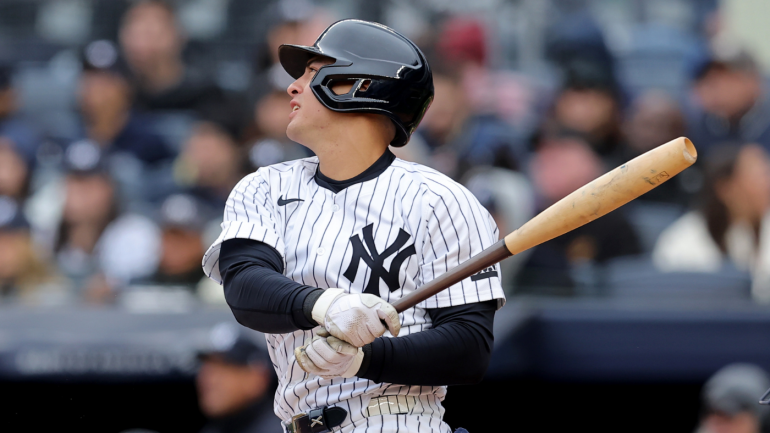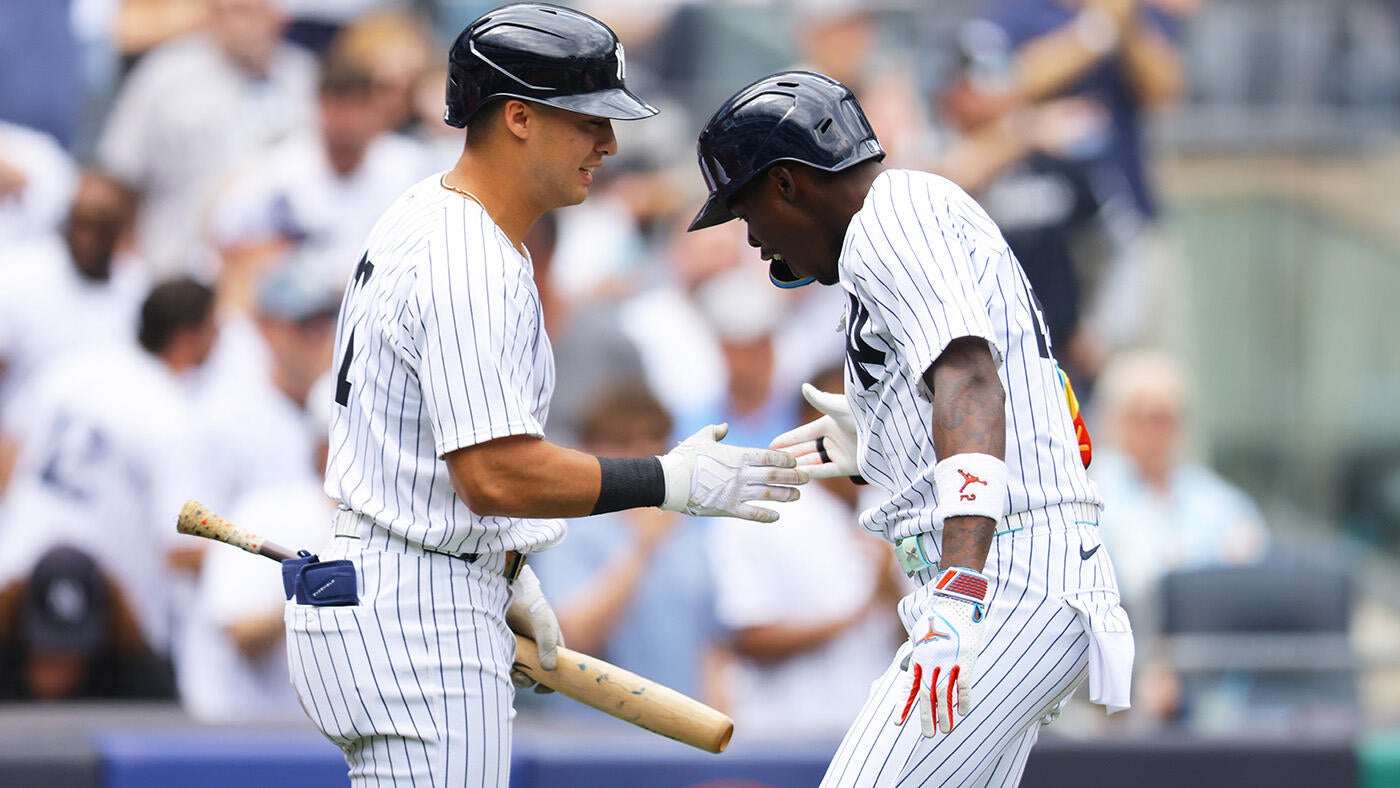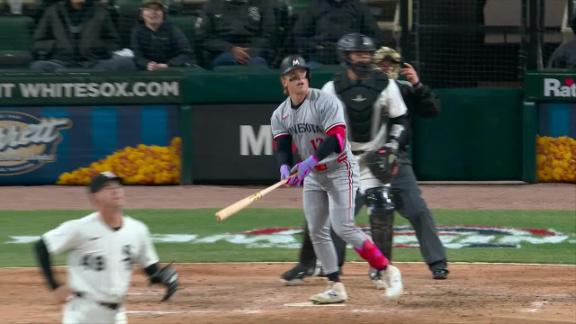
Baseball, in living up to the title of America’s pastime, loves nothing more than a quick fix. Throw like this, swing like that, master the simple trick du jour and you too can amass generational wealth. These fads come and go, often in less time than it takes for an influencer to film a reel, but the allure of the next big thing never goes out of style. To say nothing of the endorphin rush triggered by the belief that, after sifting through myriad fake grails, here’s the Real Deal.
It makes sense, then, that the talk around Major League Baseball after Opening Weekend concerned not a player or a team, a play or a result, but a piece of lumber: the torpedo bat. After speaking on Monday with various front-office personnel, including several scouts, analysts, and directors, it’s clear that even the professionals aren’t certain what to make of these new tools of the trade.

The torpedo bat is the brainchild of a pioneering New York Yankees front-office staffer turned Miami Marlins coach, Aaron Leanhardt. His vision was to distribute the bat’s mass across areas where some players make contact more frequently, thereby optimizing their offensive output in a way that normal bats did not. To paraphrase former big-league infielder Kevin Smith, the intent is to improve a player’s chances of barreling the ball and reduce the likelihood of whiffing.
The torpedo bat was launched into the discourse over the weekend by a confluence of events. While the Yankees were partaking in their personal home run derby against the Milwaukee Brewers, team broadcaster Michael Kay was detailing the modified bats being employed by Jazz Chisholm Jr. and Anthony Volpe, among others. It’s a well-known statistical principle that causation doesn’t equal correlation, but that dynamic gets confused when there’s ambiguity surrounding a topic — such as, say, the legality of the bats being used to clobber an opposition’s pitching staff all weekend long.
To dispel potential misconceptions: these torpedo bats are legal, as they fit within MLB’s specification regulations. They’re not some dirty little proprietary secret the Yankees never wanted the world to know about, either. Some were used during last year’s postseason and then in the Arizona Fall League, a league-organized circuit that includes prospects from every organization. This spring, bat manufacturing company sales reps were out in force to offload as many torpedoes as possible.
Yet the torpedo bat’s quick ascent to clubhousehold term has left front-office personnel scrambling to figure out the potential effects — and whether these bats should even be allowed for in-game use.
“I think they’ll be banned,” one front-office source told CBS Sports. “I think MLB will be compelled to establish a rule to prevent them from getting out of hand, and I think the interests of fairness will direct that rule to be something that more or less bans the torpedo design.”
The source’s contention stems from theory and some preliminary analysis, such as one floated by Dr. Alan Nathan, one of baseball’s foremost physics experts, that attempts to model the difference between the torpedo bat and a more standard piece of wood. Nathan’s theory estimates how batters could sacrifice exit velocity near the barrel for more near the label.
“They do have an impact, a non-trivial impact,” the source said. “A lot of it depends on the batter’s control of the bat and whatnot.”
Other sources weren’t as adamant that the torpedo bat should be banned, but they expressed concern about potential downstream effects if the new equipment takes over. Among them: batters crowding the plate if their lumber allows for greater margin of error on inside pitches, and the grim possibility of the league’s offensive environment veering even further into the three true outcomes (walks, strikeouts, and home runs).
“Just what we need,” a veteran scout said, “another incentive for pitchers to not throw strikes.”
Controversy about this or that aspect of a bat is familiar territory for MLB. The regulations are in place for a reason: to prevent enterprising players and teams from taking too many creative liberties. (Rule 3.02 states, among other restrictions, “the bat shall be a smooth, round stick not more than 2.61 inches in diameter at the thickest part and not more than 42 inches in length.”) Comb through the sport’s history, and you’ll find countless kerfuffles over the wood. Heck, the Yankees franchise alone is illustrative in this matter. There’s the Pine Tar Game; there’s an incident in the late ’60s where New York played under protest after Bobby Cox’s sawed-off bat was deemed improper; and who could forget that time in the 2000s when Joe Torre had a Tampa Bay Devil Rays player’s bat confiscated because he suspected that it’s flat (instead of round) end was illegal. Yup, who could forget … except almost everyone in the nearly two decades since Torre and Joe Maddon engaged in a cold war.
Legislation around this topic isn’t anything new for MLB, either. Here’s an excerpt from an article published in July 1884 regarding Cap Anson’s bat: “This wrapping of the handle, however, is technically a violation of the rule, which requires the bat to be made ‘wholly of wood,’ but it is a rule which nobody will object to changing if the wound handle proves to be an improvement.” In the nearly 141 years since, all kinds of tweaks and amendments have been made concerning bats. There was even a time when, as hard as it is to imagine given the prevalence of advertising around the park these days, the league temporarily banned manufacturers from printing their logos on the bats.
All of this is to say that none of this torpedo bat business should be too alarming. It’s a necessary part of an ever-evolving game. The league and its teams will undoubtedly spend the next few weeks to months gathering data before determining the best path forward.
Besides, not everyone was concerned. One high-ranking executive joked that their team could use some of the new bats after an underwhelming weekend at the dish. Another veteran evaluator dismissed the bats as being worth the hype or the hoopla. Precedent certainly seems to be one the side of those checking their swings on the matter. Baseball has, in recent years, seen a variety of bat experimentation aimed at improving player performance. Remember the ax-handle bat? What about the puck knob bat? At one point in time, those (and many other innovations) were considered potential gamechangers. No longer.
There are exceptions. Maple bats, for instance, didn’t become prevalent until the 1990s. Now, they’re everywhere. But most of these supposedly revolutionary ideas and advancements wind up as fads, not fixtures. The game isn’t solved, nor is it easily hacked or disrupted — not in a meaningful, sustainable way. Perhaps the torpedo bat proves to have legitimate staying power. Even if it does, there is one argument that will remain in style against it — one focused on, what else, the aesthete above all.
“Also,” concluded a source, “they look stupid.”

